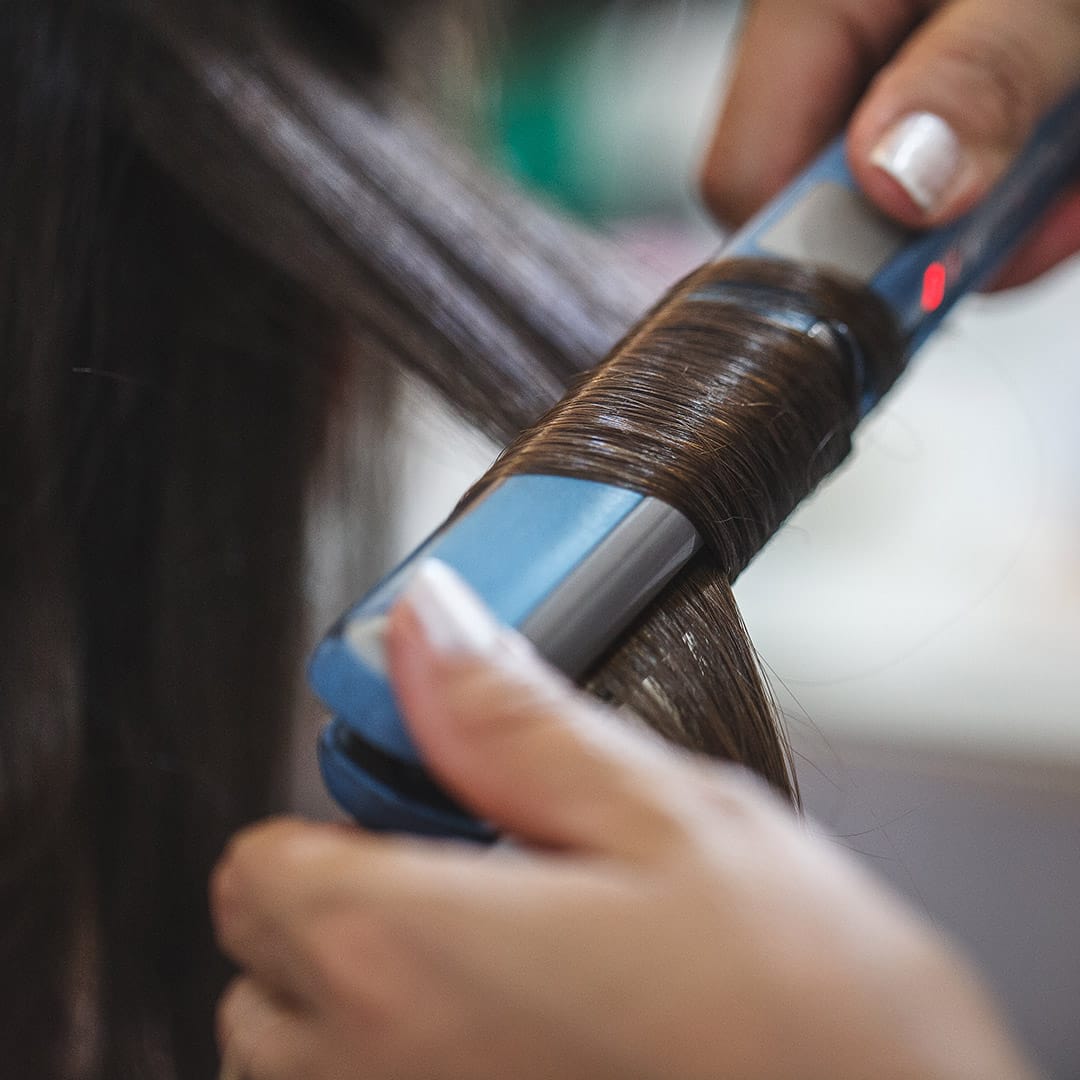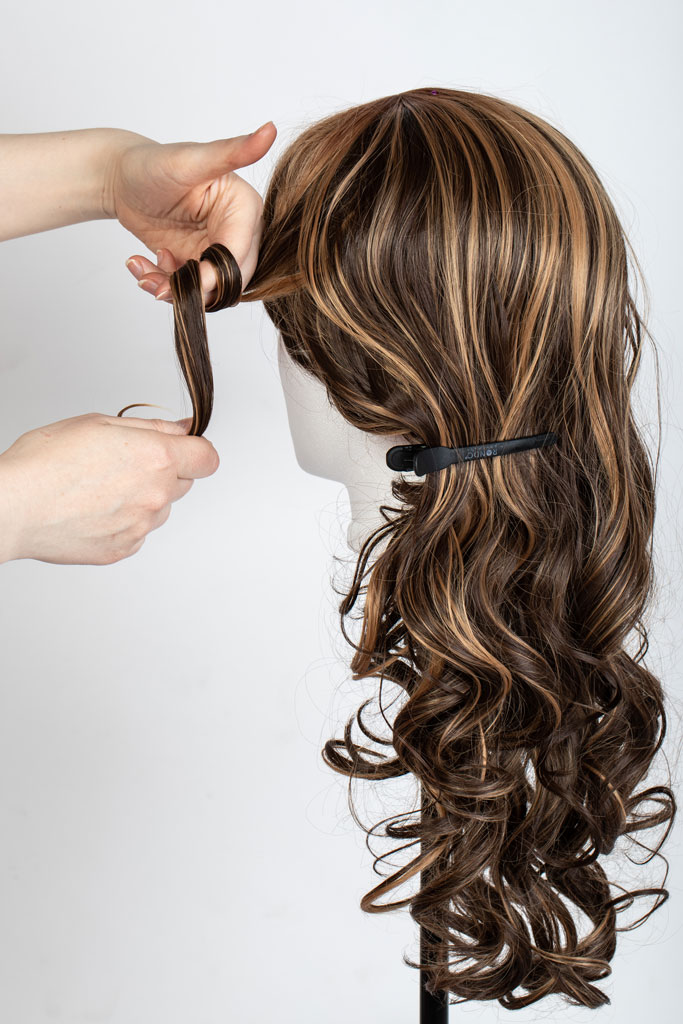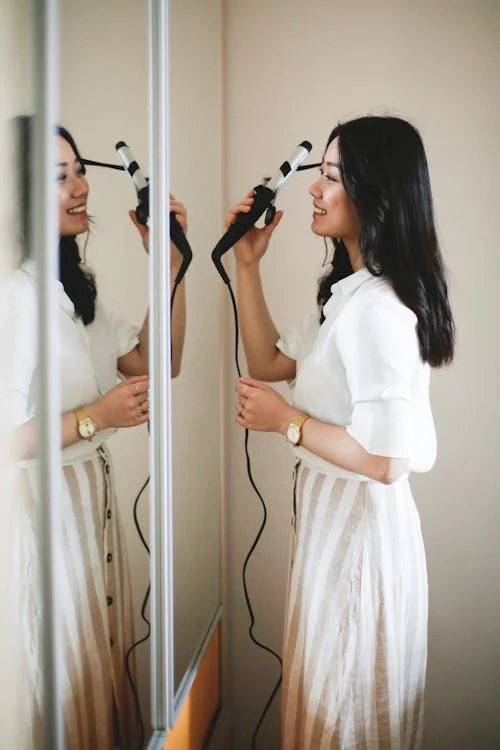Introduction
When it comes to curling synthetic hair with a curling iron, there are several important factors to consider, including the type of synthetic hair, the heat settings of the curling iron, and the proper techniques for achieving beautiful curls. Let’s delve into the details of curling synthetic hair and explore the best practices for creating stunning, long-lasting curls.

Understanding Synthetic Hair Types
Before attempting to curl synthetic hair with a curling iron, it’s essential to understand the type of synthetic hair you are working with. There are various types of synthetic hair, including Kanekalon, Toyokalon, and heat-resistant synthetic fibers. Each type has different heat resistance properties, so it’s crucial to identify the specific type of synthetic hair you have in order to determine the appropriate heat settings for curling.
Heat-Resistant Synthetic Hair
Many modern synthetic hair extensions and wigs are made from heat-resistant fibers, such as high-quality Kanekalon or Toyokalon, which are designed to withstand heat styling tools like curling irons and straighteners. Heat-resistant synthetic hair can typically tolerate temperatures up to 300-350 degrees Fahrenheit (150-175 degrees Celsius) without melting or becoming damaged. It’s important to check the product specifications or consult with the manufacturer to confirm the heat resistance level of your synthetic hair.
Choosing the Right Curling Iron
When curling synthetic hair, it’s advisable to use a curling iron with adjustable temperature settings. Look for a curling iron that allows you to control the heat level to ensure that you can set it within the safe range for your specific type of synthetic hair. Additionally, selecting a curling iron with a ceramic or tourmaline-coated barrel can help distribute heat evenly and minimize the risk of overheating or causing damage to the synthetic fibers.
Recommended Heat Settings
For heat-resistant synthetic hair, it is generally recommended to set the curling iron to a low to medium heat setting, typically between 250-300 degrees Fahrenheit (120-150 degrees Celsius). Starting with a lower heat setting allows you to test the heat tolerance of the synthetic hair and adjust as needed to achieve the desired results. It’s important to avoid using high heat settings, as excessive heat can lead to irreparable damage to the synthetic fibers.
Preparing the Synthetic Hair
Before curling synthetic hair, it’s beneficial to prepare the hair by detangling it gently using a wide-tooth comb or a specialized detangling brush. Apply a small amount of heat protectant spray or serum specifically formulated for synthetic hair to create a protective barrier against the heat of the curling iron. This step helps minimize the potential for heat damage and ensures that the curls remain smooth and sleek.
Sectioning the Hair
When curling synthetic hair, it’s helpful to divide the hair into small, manageable sections to ensure thorough and uniform curling. Use hair clips or hair ties to secure the rest of the hair while you work on individual sections. This approach allows for better control and precision when curling, resulting in more defined and consistent curls throughout the hair.
Curling Techniques
When using a curling iron on synthetic hair, it’s advisable to use a gentle and controlled approach to avoid applying excessive heat or pressure to the fibers. Begin by wrapping a small section of synthetic hair around the curling iron barrel, starting from the mid-shaft or ends and working towards the roots. Hold the hair in place for a few seconds (typically 5-10 seconds, but refer to the specific recommendations for your synthetic hair type), and then release the curl.
Cooling and Setting the Curls
After curling each section of synthetic hair, allow the curls to cool and set before handling them. This cooling period helps the curls retain their shape and structure, resulting in longer-lasting and bouncier curls. You can gently cup the curls in your hand or use clips to hold them in place as they cool. Once the curls have cooled, you can release them and gently tousle or style them as desired.
Finishing Touches and Maintenance
Once you have curled your synthetic hair, you can apply a small amount of lightweight hair oil or serum to add shine and reduce frizz. Avoid using heavy styling products, as they can weigh down the synthetic hair and create buildup. Additionally, it’s important to follow the specific care instructions provided by the manufacturer to maintain the quality and longevity of your synthetic hair, including proper storage, cleaning, and styling practices.

Experiment with Different Curling Styles
When curling synthetic hair, don’t be afraid to experiment with different curling styles to find the look that complements your face shape and personal style. You can create various types of curls, including loose waves, tight curls, spiral curls, or beachy waves, depending on the curling iron size, wrapping technique, and styling preferences. Trying out different curl patterns can add dimension and texture to your hairstyle, allowing you to customize your look for any occasion.
Consider Using Heatless Curling Methods
If you’re concerned about the potential heat damage to synthetic hair or prefer a heat-free styling option, you can explore heatless curling methods as an alternative. Heatless curling techniques, such as using flexi rods, foam rollers, braiding, or twisting the hair, can create beautiful curls without exposing the synthetic fibers to heat. These methods are gentle on the hair and can produce natural-looking curls with minimal effort.
Opt for Synthetic Hair-Friendly Products
When styling synthetic hair with a curling iron, it’s essential to use hair care products that are specifically formulated for synthetic fibers. Look for heat protectant sprays, styling creams, or serums designed for synthetic hair to provide added protection against heat damage and enhance the curling process. These products can help maintain the softness, shine, and manageability of synthetic hair while prolonging the life of your styled curls.
Avoid Overstyling and Excessive Heat Exposure
While curling synthetic hair can transform your hairstyle, it’s important to avoid overstyling and excessive heat exposure to prevent damage and preserve the integrity of the synthetic fibers. Limit the frequency of heat styling sessions and give your hair breaks between styling sessions to allow the fibers to recover. Additionally, be mindful of the heat settings on your curling iron and avoid prolonged exposure to high temperatures to prevent overheating and potential melting of the synthetic hair.

Practice Proper Care and Maintenance
To ensure the longevity of your curled synthetic hair, practice proper care and maintenance routines to keep your hairstyle looking fresh and vibrant. Store your synthetic hair extensions or wigs in a cool, dry place away from direct sunlight and heat sources to prevent fading or heat damage. Use gentle cleansing products specifically designed for synthetic hair and follow the manufacturer’s recommendations for washing, conditioning, and detangling to maintain the softness and luster of the fibers.
Seek Professional Advice
If you’re uncertain about curling synthetic hair or need guidance on specific styling techniques, consider seeking advice from professional hairstylists or experienced individuals who have expertise in working with synthetic hair. Professional stylists can offer personalized recommendations, tips, and tricks for achieving the desired curling results while ensuring the safety and quality of your synthetic hair.
Embrace Versatility and Creativity
Curling synthetic hair with a curling iron opens up a world of possibilities for expressing your creativity and showcasing different hairstyles. Whether you prefer glamorous ringlet curls, voluminous waves, or chic spirals, embracing the versatility of synthetic hair allows you to change your look effortlessly and experiment with new styles. Have fun exploring various curling techniques and trends to discover the perfect curls that enhance your overall appearance and confidence.

Final Considerations
Curling synthetic hair with a curling iron requires a thoughtful and cautious approach to ensure the best results while preserving the integrity of the synthetic fibers. By understanding the heat resistance properties of your synthetic hair, selecting the appropriate heat settings, and employing gentle curling techniques, you can achieve beautiful, long-lasting curls that enhance your overall hairstyle.
In summary, curling synthetic hair with a curling iron is possible and can yield stunning results when done correctly. With the right tools, techniques, and care, you can enjoy the versatility and beauty of curled synthetic hair while maintaining its quality and appearance for extended wear. Whether you’re preparing for a special occasion or simply want to change up your look, mastering the art of curling synthetic hair allows you to express your personal style with confidence and creativity.

